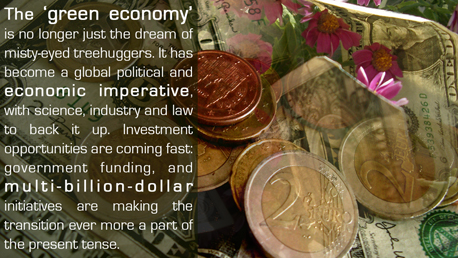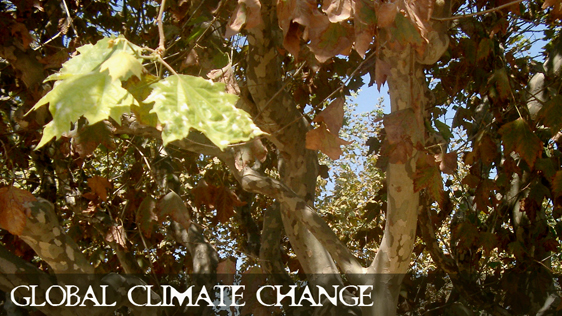
On Thursday of last week, we found on the same day reports that mortgage foreclosures were at an all-time high in the US, the US dollar had fallen to an all-time low against the euro ($1.56 to 1€), the Federal Reserve joined with other central banks to infuse $200 billion into capital markets, oil hit an all-time record of $111/barrel, gold hit an all-time record of $1,001/ounce, Asian and European markets plummeted on news that Carlyle Capital —one of the world's largest capital management funds— was in collapse, and Chrysler would shut down its entire corporation for 2 weeks in July, with no pay, to "increase productivity".
The Fed deal for banks and bond-holders included a special allowance for banks to use otherwise questionable adjustable-rate-mortgage debt as collateral against the new loans. The move was an attempt to help banks re-capitalize holdings whose value had fallen so sharply that the likely result would be steep capital losses and a further wave of foreclosures. European and Asian central banks are likewise worried that a severe blockage in credit and lending in the US will cut into global export and trade potential.
Today, one of Wall Street's most prestigious and far-reaching investment banks, Bear Stearns, was bought for $2/share, a little more than 1% of what it was worth at the in late 2007, and just 10% of its worth just last Friday. Many investors lost far more than 90% of the value of their holdings; former CEO James Cayne is reported to have lost some 99.8% of the value of his holdings in the firm.
In January, the BBC reported that wild speculation by hedge funds may be driving financial deterioration extensive enough to create a global recession of historic proportions. Former Republican presidential candidate, Rep. Ron Paul (TX) has said US fiscal policy and government borrowing may overstress the US economy so severely it could lead to "global economic collapse".
On 14 March 2008, the last word in the US House of Representatives, spoken by Rep. Roscoe Bartlett (R-MD), warned of the economic crisis that could follow "peak oil", when oil extraction and production will enter a permanent decline, even as demand continues to rise worldwide. This was the 39th time Rep. Bartlett has presented the peak oil problem to the House of Representatives.
One can hardly exaggerate the swelling global economic crisis. Chinese officials are reportedly hoping that the crisis will slow its 10%-plus growth, because they are afraid unsustainable growth rates could lead to inflation. Exploding fuel costs, water resource depletion and the loss of arable land, along with the shift of grain crops to biofuels production, has brought a disturbing surge in food prices that threatens to exert long-term strain on economies across the world.
In June 2007, the Christian Science Monitor reported that:
A gallon of milk in Birmingham, Ala., is expected to cost $4.50 this summer, perhaps more. At Wetzel's Market in Glen Rock, Pa., the New York strip steaks that were on sale for $4.99 a pound last Fourth of July will be $6.99 this year. In Boston, some shoppers report checkout prices on certain items that are 30 percent higher now than last summer.
In 2007, Spain had one of its most productive harvests to date, yet the price of vital foodstuffs increased dramatically. The price of bread, the measure of economic stability or growth in Spanish tradition, increased by a stunning 40%, all while Spain's vibrant real estate and building sectors lost steam, and personal debt reached all-time highs, in an environment where incomes rarely grow by more than the mandatory minimum of the officially-declared rate of inflation.
Prices for basic grains in Kenya, itself a highly productive agricultural nation, have doubled in the last year. Recent political violence has slowed foreign investment, crippled the economy, turned off tourists and has delayed the start of the planting season, meaning that food production will likely diminish still further in 2008, as market pressures drive the cost of food sharply higher.
In a still more complicated case, Zimbabwe has inflation reported at 100,000% —some estimates in late 2007 put the rate of "real inflation" at 150,000%—, putting the price of bread into the millions of dollars (Z$). In 1980, US$1 was worth only Z$0.68, but by 2006, one US dollar was worth Z$101,000. The currency was revalued at 1,000 times its value, so that one US dollar was worth Z$101, but by the time the new currency was introduced, one US dollar was worth a revalued Z$250.
Part of the problem with the current economic unhealth is a failure of international systems to adapt real economic activity to globalized trade policies. Where markets have been "opened" and foreign investment has replaced failed compound-interest intergovernmental loan policies, the result has often been the displacement of resources without a corresponding infusion of comparable resources to balance the "innovations" of the global marketplace.
This means that agricultural powers —from Brazil to the US, Russia, Mongolia and western Europe— find themselves poorer in foodstuffs than they should be and facing price inflation, even as their real productivity has risen. The ability to move investment from tax-stressful markets to tax-favorable markets has built an expectation of gain into investment patterns that don't necessarily carry long-term economic resilience with them, making the reaction to underwhelming returns more severe than it should rationally be.
And industrial powers are finding that natural resources once considered so common and so basic in their overall economic expansion are now being distributed across the world, increasingly consumed in far higher per-capita rates by China and India —each close to or more than 4 times as populous as the United States—, meaning that the ability of traditional industrial powers to fall back on industry as a growth mechanism or to exert global economic power through industrial supply and demand dynamics, is severely diminished.
The tested wisdom available to most bankers and traders to deal with this apparently distorted but really "new-model" environment is limited. There has not been enough time to deal with a world where "emerging economies" can now dominate the pricing of global commodities like grains, metals and hydrocarbon fuels.
If we are seeing an 'economic perfect storm', what is not clear at present is whether it will be classed as a massive "correction" or whether it will build into a new productive model for global trade a tendency to shift resources away from traditional centers of power, a phenomenon for which few economic and political leaders are truly prepared.
 FOOTNOTE: We may need to develop new technological alternatives to current regulatory practices, but keeping in mind that the freedom of movement of goods and services is key to the long-term health of a global economy. Balancing capital interests with consumer interests, lending interests with spending interests and resource availability with globalized demand are the keys to achieving such long-term resilience.
FOOTNOTE: We may need to develop new technological alternatives to current regulatory practices, but keeping in mind that the freedom of movement of goods and services is key to the long-term health of a global economy. Balancing capital interests with consumer interests, lending interests with spending interests and resource availability with globalized demand are the keys to achieving such long-term resilience.- HotSpring.fm: "Cloud Clarity vs. Shadow Banking"


















